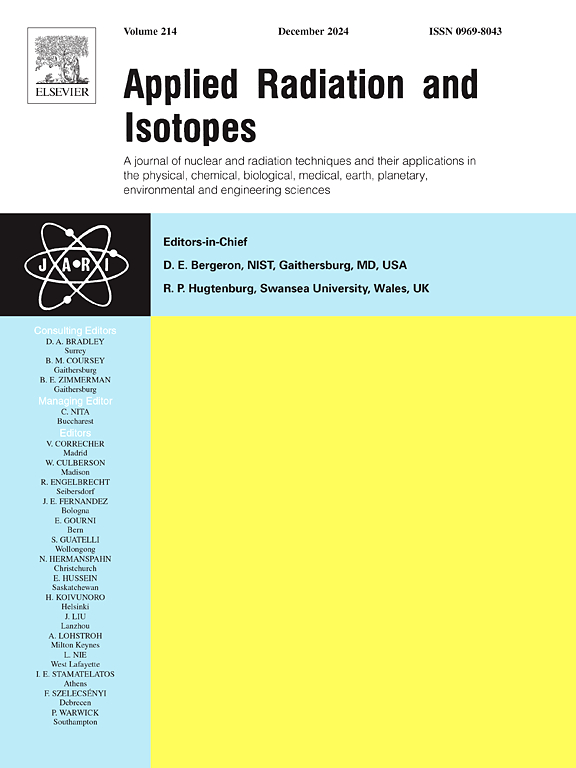用参考源法测定127Sb的半衰期
IF 1.8
3区 工程技术
Q3 CHEMISTRY, INORGANIC & NUCLEAR
引用次数: 0
摘要
127Sb在核取证中是一种有用的放射性核素,但先前测量的差异导致其推荐半衰期值存在1.8%的不确定性,从而影响了准确的活度测定。本研究在西安脉冲堆热中子辐照下,从235U裂变产物中化学分离出127Sb样品。用两个高纯度锗(high - pure Germanium, HPGe)探测器采用参考源法监测127Sb的衰变,在25天(约6.5个半衰期)的等距间隔内获得伽马光谱。衰变曲线的加权最小二乘拟合得出的半衰期为3.877(24)天,与最新推荐值3.85(7)天相差0.7%。与之前的测量相比,我们的结果显著降低了不确定性,提高了核法医应用的可靠性。本文章由计算机程序翻译,如有差异,请以英文原文为准。
Determination of the half-life of 127Sb using the reference source method
127Sb is a helpful radionuclide in nuclear forensics, yet discrepancies in previous measurements have led to a 1.8 % uncertainty in its recommended half-life value, compromising accurate activity determination. In this study, 127Sb samples were chemically separated from the fission products of 235U following thermal neutron irradiation at Xi'an Pulsed Reactor. The decay of 127Sb was monitored using the reference source method with two High-Purity Germanium (HPGe) detectors, acquiring gamma spectra at equidistant intervals over 25 days (about 6.5 half-lives). A weighted least-squares fit of the decay curve yielded a half-life of 3.877 (24) days, deviating by 0.7 % from the latest recommended value of 3.85 (7) days. Our result reduces the uncertainty significantly compared to prior measurements, enhancing reliability for nuclear forensic applications.
求助全文
通过发布文献求助,成功后即可免费获取论文全文。
去求助
来源期刊

Applied Radiation and Isotopes
工程技术-核科学技术
CiteScore
3.00
自引率
12.50%
发文量
406
审稿时长
13.5 months
期刊介绍:
Applied Radiation and Isotopes provides a high quality medium for the publication of substantial, original and scientific and technological papers on the development and peaceful application of nuclear, radiation and radionuclide techniques in chemistry, physics, biochemistry, biology, medicine, security, engineering and in the earth, planetary and environmental sciences, all including dosimetry. Nuclear techniques are defined in the broadest sense and both experimental and theoretical papers are welcome. They include the development and use of α- and β-particles, X-rays and γ-rays, neutrons and other nuclear particles and radiations from all sources, including radionuclides, synchrotron sources, cyclotrons and reactors and from the natural environment.
The journal aims to publish papers with significance to an international audience, containing substantial novelty and scientific impact. The Editors reserve the rights to reject, with or without external review, papers that do not meet these criteria.
Papers dealing with radiation processing, i.e., where radiation is used to bring about a biological, chemical or physical change in a material, should be directed to our sister journal Radiation Physics and Chemistry.
 求助内容:
求助内容: 应助结果提醒方式:
应助结果提醒方式:


